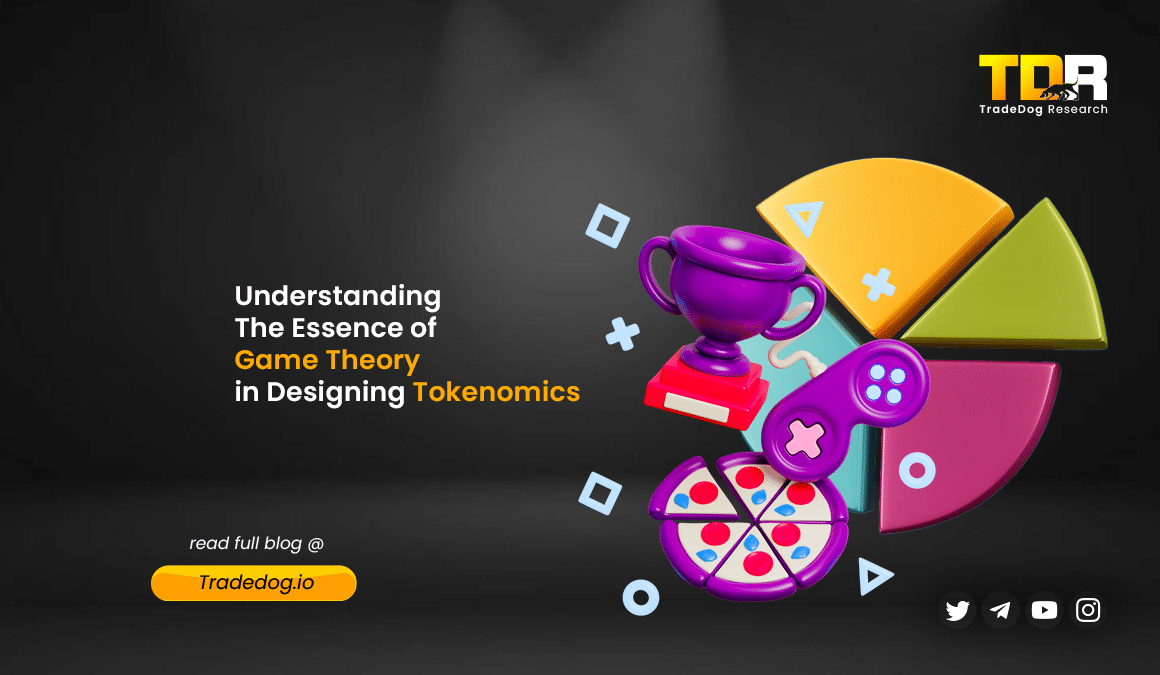Cool Orologi: Timeless Trends
Explore the fascinating world of watches and timepieces.
Tokenomics: Leveling Up the Game Economy
Discover how tokenomics is revolutionizing game economies, boosting player engagement, and unlocking new revenue streams. Level up your gaming knowledge!
Understanding Tokenomics: The Fundamentals of Game Economies
Tokenomics is a blend of 'token' and 'economics,' a crucial framework that governs the economic dynamics of blockchain-based games. Understanding the fundamentals of game economies requires a deep dive into how tokens function within the game environment. Tokens can serve various purposes, including representing in-game currency, enabling ownership of in-game assets, and facilitating interaction in decentralized ecosystems. These digital assets can often be earned through gameplay, traded on marketplaces, or utilized to unlock features, making them a vital component of player motivation and engagement.
At its core, tokenomics encompasses the principles of supply and demand, distribution mechanisms, and usage rewards. For instance, a well-structured game economy might involve limited token supply to create scarcity, thus increasing the perceived value of the tokens over time. Game developers must carefully plan the inflation rates, token release schedules, and the incentives for players to hold or spend their tokens. By comprehensively understanding game economies, creators can design engaging experiences that enhance player retention and fuel the overall success of their games.

Counter-Strike is a popular tactical first-person shooter game that has captivated gamers worldwide since its inception. Players can participate in various game modes, often focusing on team-based objectives. For those looking to elevate their gaming experience, using a bc.game promo code can provide exciting benefits and enhance gameplay.
How Tokenomics Affects Game Design: Creating Sustainable In-Game Economies
Tokenomics plays a crucial role in shaping modern game design, particularly in the development of decentralized games and virtual economies. By integrating tokenomics into the design framework, game developers can create sustainable in-game economies that empower players through ownership and trading of digital assets. For instance, a well-designed token system can incentivize players to participate in the game ecosystem, promoting engagement and loyalty. This not only enhances the gaming experience but also ensures that the in-game currency holds value over time, fostering a vibrant community around the game.
To effectively implement tokenomics, developers must consider various factors such as scarcity, utility, and distribution. A balanced economy can be achieved by:
- Creating scarcity by limiting the supply of tokens, which can increase demand and value.
- Ensuring utility by allowing tokens to be used for in-game purchases, upgrades, or unique experiences, thereby encouraging spending.
- Implementing fair distribution methods, such as rewarding players for achievements or active participation, to create a sense of ownership.
By focusing on these elements, game designers can craft engaging experiences that not only attract players but also build a sustainable economy within the game.
What Makes a Successful In-Game Token: Key Principles of Tokenomics
In the rapidly evolving world of blockchain gaming, successful in-game tokens are underpinned by effective tokenomics. One of the key principles is the concept of scarcity. Just like physical currencies, the supply of tokens should be limited to create value. Developers often set a maximum supply limit, and manage the inflation rate to ensure that tokens retain their worth over time. Another principle is utility; tokens should serve a meaningful role within the game ecosystem, whether for purchasing in-game items, unlocking features, or participating in governance. A token with clear utility not only enhances gameplay but also cultivates a loyal user base, driving demand and engagement.
Moreover, liquidity is essential for a token's success. A well-designed tokenomics system should include mechanisms that facilitate trading and incentivize liquidity. This can involve integrating with decentralized exchanges (DEX) or creating liquidity pools where players can stake their tokens. Additionally, community engagement plays a crucial role; providing players with opportunities to earn rewards for participation can lead to organic growth. This creates a vibrant economy where tokens can circulate freely and maintain their value, ultimately establishing a robust and enduring in-game currency.